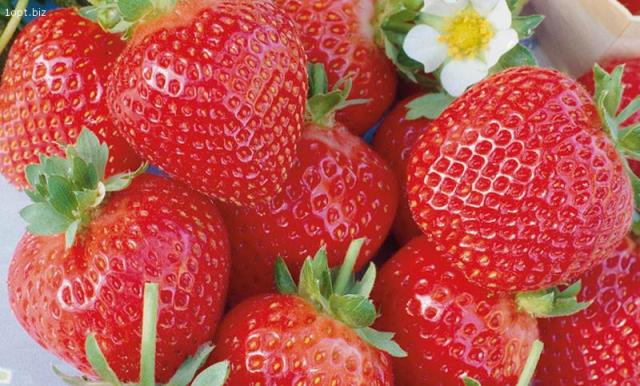Strawberry is the most popular berry, which both adults and children adore, which is why it can be found on almost any garden plot. But before planting this crop, many gardeners face a difficult choice of a particular variety. In order to save space in the garden and get as much harvest as possible you should pay attention to the strawberry Elsanta. In this article we will talk about the description of this variety of Victoria.
Table of contents
Description varieties Victoria Elsanta
Strawberry variety Elsanta was bred in Holland in 1981 by crossing varieties such as Gorella and Holiday.
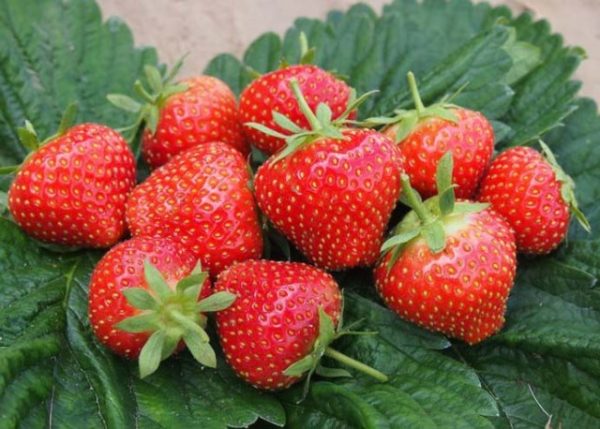
Shrubs grow to medium size possess weak sprawling. An interesting feature is the fact that very few mustaches and rosettes are formed on them.
Elsanta strawberry berries are small, on average one of them weighs 45-50 grams, in their form they are wide-conical or rounded. Outside, such fruits are bright red and glossy, and inside are scarlet and very juicy. The taste of such strawberries is sweet, with a slight cause of sourness. One of the main advantages of such berries will be their density, due to which they are stored much longer than other varieties, and their transportation does not bring much trouble.
Fruiting Elsanta comes in the medium term and lasts long enough, so that up to 1.5 kilograms of berries can be collected from one bush. The resulting crop can be used for fresh consumption, freezing and preparation of various kinds of blanks.
If all the rules for planting the plants are observed, the first berries can be picked for the next season.
This variety does not tolerate cold and drought. Without shelter such a plant will die if the temperature drops below -14 degrees.
Natural growth region
Considering that Elsanta was bred in Europethen a temperate or hot climate will become favorable conditions for its cultivation.
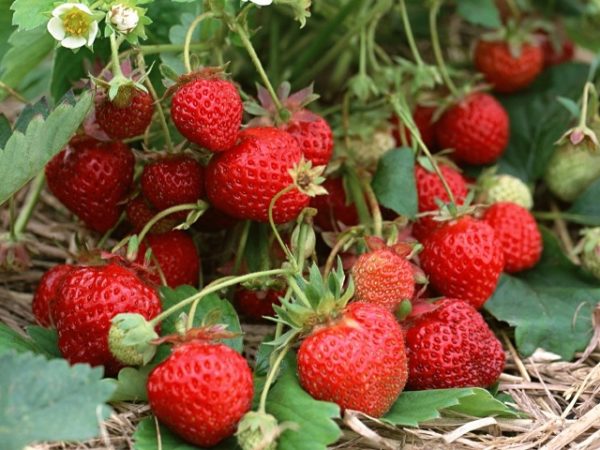
The best way this variety can settle down in the southern or central region of Russia, where the plant will not be exposed to cold temperatures.
However, it should be remembered that in central Russia there can be quite cold frosts, from which strawberries should be hidden and protected.
The advantages and disadvantages of the variety
Grade advantages:
- relatively large berries with excellent taste;
- high yields, thanks to which the Elsanta is very popular;
- fruits tolerate transportation well;
- the shelf life of such strawberries at room temperature is 3 days, and if you put the berries in the fridge, they will remain fresh for 5 days;
- shrub does not need frequent feeding;
- the plant is not afraid of viral diseases, fungal blotch and verticillia.
Disadvantages:
- poor frost resistance, which does not allow growing Elsanta in areas with a harsh climate;
- dependence on regular and heavy irrigation;
- susceptibility to such diseases as root rot and powdery mildew.
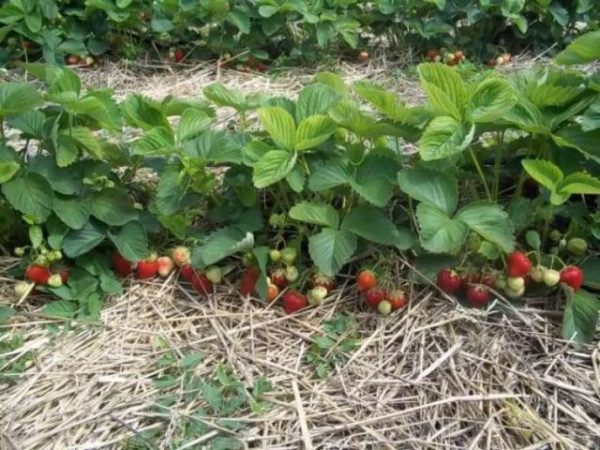
Planting and care
In order for Elsanta to give a good harvest, it is necessary to follow all the rules for planting. This variety of strawberries is recommended to be planted in the fall, in the second half of September. When spring planting there is a risk of getting smaller fruits.
It is also necessary to prepare the beds, for this purpose the land is carefully dug up, weed, break up lumps and pour water abundantly.
After a day you can begin to form the holes and planting plants. Experienced gardeners recommend placing strawberries so that the distance between the rows is 40 centimeters, and between the holes in the same row is 25 centimeters.
The following fertilizers are applied to 1 square meter of soil:
- 3 kilograms of rotted manure or compost;
- 10 grams of potassium chloride;
- 30 grams of superphosphate.
The process of planting itself is quite simple, and everyone can handle it. First, the ground is carefully loosened, after which they dig up holes with a depth of 8-10 centimeters and place bushes there. After completion of the work strawberries are watered and mulched with peat, compost or humus.
Strawberry care

The variety does not tolerate drought, so the main rule in the cultivation of these berries will be sufficient and timely watering. In the first month after planting, the procedure is repeated daily, after which the number of waterings is gradually reduced to 1 time per week. On hot and dry days, Elsanta is watered once every 4-5 days. It should be borne in mind that per 1 square meter of landings contribute 8-10 liters of water.
Another very important procedure there will be timely loosening and removal of weeds, which is carried out once every two weeks.
Experienced gardeners do not recommend fertilizing this variety of strawberries, except for 3 years of life, when the plant is depleted and without additional support, the quantity and quality of the crop may change for the worse.
- At the end of September, at the end of the second fruiting, the bushes are fed with organic and complex mineral fertilizers;
- In the spring, as soon as it becomes snow and stable weather is established, urea or other nitrogenous fertilizers are applied under the strawberries.
Preparing strawberries for winter
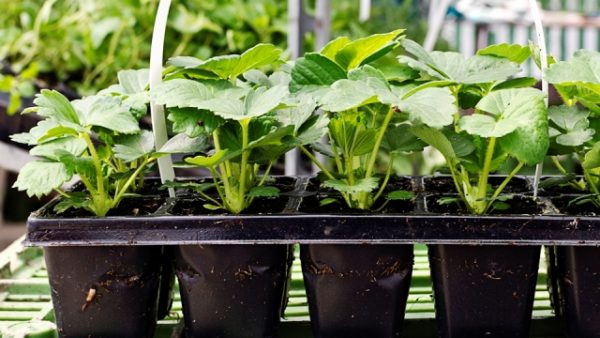
Considering that Elsant does not tolerate cold, it must be prepared for the onset of winter, for this purpose several types of work are carried out:
- Pruning leaves;
- Removal of diseased parts of the plant;
- Treatment of bushes from various pests;
- Loosening the soil, the weeds are better left in place, because their removal can damage the root system of strawberries, which may not have time to recover before the first frost;
- Then spend abundant water-charging irrigation and mulch the plant with peat, pine needles, dry grass or leaves;
- The final stage will be the immediate shelter of strawberries.
There are two opinions regarding pruning Elsanta:
- one group of gardeners believes that it is better not to interfere in the natural processes and not to remove the leaves before the onset of winter. This is due to the fact that they can become an additional shelter for the kidneys;
- The second opinion is that pruning leaves stimulates the plant well, and the yield next year will be higher.
Cover bushes after the first frost. This is necessary so that they harden and survive the winter frost better. Spruce twigs, straw, dry leaves or special covering materials can be used as a covering material. Experienced gardeners recommend to give preference to natural materials, because through them enters the air, not letting strawberries to rot and rot.
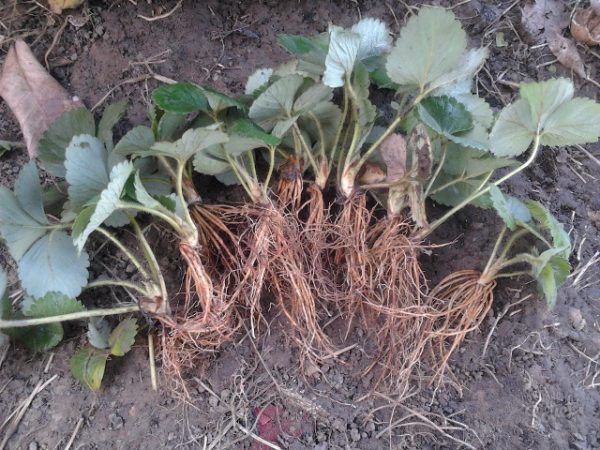
Breeding methods
Considering that strawberry Elsanta is a hybrid variety, seed multiplication is used very rarely, because in this case the probability of preserving the characteristics of the mother plant is low.
The process of growing seedlings from seeds is as follows:
- Initially, the seeds are washed and thoroughly dried;
- 2-3 months before planting seedlings in open ground, the seeds are laid out in containers, covered with a thin layer of earth and moistened gently;
- Further care will be in regular and timely watering.
Reproduction with a mustache is only suitable for strong and healthy plants. On each such bush, they choose the most powerful mustache and bend it down to the ground with the socket, the remaining mustache must be removed. To care for such a process is necessary as for seedlings. A week before transplanting plants can be divided.
In the fall, an adult three-year-old plant is dug out of the ground and divided into several parts, each of which must have a healthy process with three leaves.
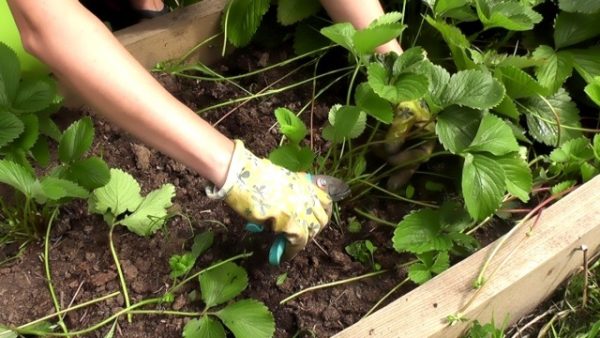
Features of fruiting
The variety brings a huge amount of harvest, which is famous not only for its taste and appearance, but also for its high density. Also, this plant has a few more features:
- The first strawberry of this variety can be tasted at the beginning of June, and if it is properly cared for shrubs, it can delight with tasty berries for 3-4 weeks;
- In order to preserve the density of the berries, it is necessary to maintain the correct mode of irrigation, that is, during fruiting, the soil under the shrub is moisturized only after it dries out a little;
- Another feature is that with a lack of sunlight, the tips of the berries do not ripen and remain white.
It is possible to grow this variety both in the open field and in the greenhouse, but many gardeners claim that the plant bears fruit in the best way under the shelter.
Diseases and pests
The most sensitive part of the plant is the roots, which are subject to the appearance of rot or fungus, from which it is often impossible to get rid of, and the only way out is the complete removal of the shrub.
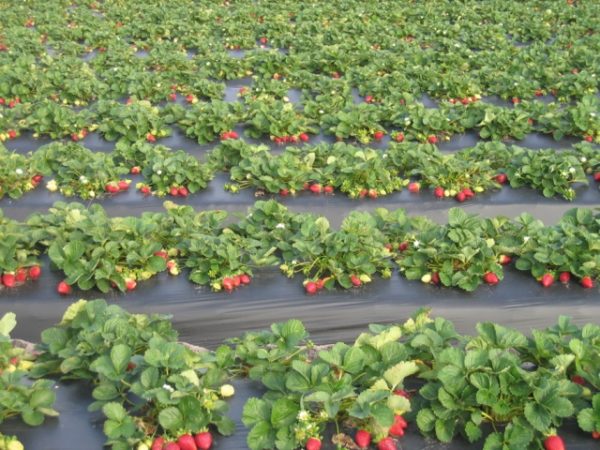
As preventive measures are the following types of work:
- timely removal of old leaves;
- digging up and burning diseased plants;
- moving landings to a new location every 3-4 years;
- regular weeding and mulching;
- in autumn, during the preparation of the plant for the winter, the soil around it is shed with a solution of Brodsky liquid or a copper emulsion.
Strawberry Elsanta is a kind of standard for this berry crop. The resulting pods have a large number of advantages, and caring for a plant does not require much effort.
